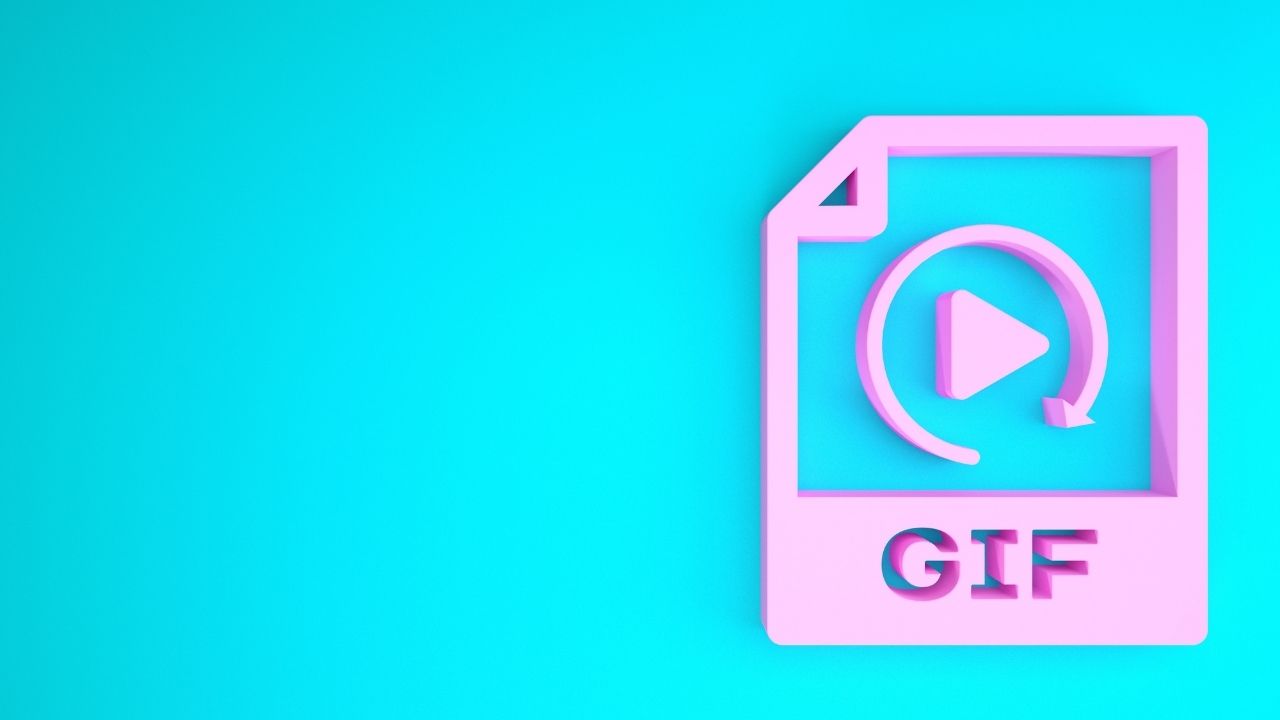Lifestyle
The Growing Need of GIFs in Modern Culture

According to Influencer Marketing Hub, it has been estimated that more than about 70% of people, particularly millenniums, who live in the United States make use of use of stickers and GIFs when it comes to their daily online conversation. This goes to show just how popular these forms of communication have become in modern times- and there is a very good reason for that too.
GIFs, also short for Graphics Interchange Format, may seem like a new concept for most people. But in reality, what most of us don’t know is that GIFs have actually existed for around 30 years, from way back when it was introduced in 1987. And it is finally a matter of time when GIFs are finally gaining popularity in today’s fast-paced digital world.
GIFs Make Conversation Worth Enjoying
Animated images have become the promptest way for people to express their emotions more accurately, if not better.
Many social media platforms such as Facebook Messenger and Instagram have integrated GIF search engines, allowing their online users to utilize GIFs to make their conversations much more interesting than words ever will be.
Showcases a Sense of Identity
Since GIFs carry pop culture references, we are open to choosing any reference we wish, which expresses our emotional response and represents our personal taste in pop culture.
This way, we have been able to create our identity online, and it has allowed us to meet with people who identify with these references and share similar tastes as us.
Aid in Promoting Events or Products
We have also witnessed that GIFs are the ideal tools you need to market your business online as it allows you to show a close up on products to meet the interest of their target audience.
Moreover, GIFs are also used to explain a complicated procedure- for example, if you are providing a service or a product with complex instructions, animated customized GIFs can help explain it step by step via its visual representation that highlights its best features for further attraction purposes.
Increasing Audience Retention
Jakob Nielsen stated that online users only tend to read about 28% of words that get published on a website. This means that people are more prone to avoiding written content and instead find more appeal in visual forms of the conveyed information.
Written information is often ignored so that the user does not overload themselves with information overload- which is why they can only remember less than half of the written portion, which is not accompanied by any visual images. Consequently, many marketers are now using GIFs in their strategies and publishing visual images to advertise companies and effectively capture their audience’s attention.
And to help out these marketers, many platforms( particularly Conversation Media platforms), are providing their unique set of products and services to help achieve this goal. Since Conversation Media is a father term used to describe every visual form of online communication such as stickers, GIFs, emojis, animojis, and avatars, they have been aiding various platforms by offering customization services and making use of it as a form of entertainment.
Furthermore, they are also known for advocating the appeal of visual communication forms and the importance of their role in modern culture.
Lifestyle
How Magic Moment Resort Became the Pioneer of a New Era: The First-Ever Dazzler Select by Wyndham

In Central Florida’s packed landscape of family hotels and theme park lodgings, a unique kind of property has emerged. Magic Moment Resort & Kids Club in Orlando is earning attention from traveling families for a simple reason. It delivers joy, warmth, and convenience at a smart value that keeps Disney dreams accessible rather than overwhelming.
By joining Wyndham, Magic Moment Resort unlocks the strength of a global powerhouse, gaining worldwide visibility, advanced technology, and access to Wyndham Rewards, the largest hotel loyalty program on the planet. This strategic move expands its reach, builds guest trust, and amplifies its impact, all while preserving the unique identity that sets it apart.
Just a short drive from the gates of Walt Disney World, the resort sits along the palm-framed stretch of West Irlo Bronson Memorial Highway. The location has long been known for its tourism bustle, yet Magic Moment has carved out a softer identity. It feels playful and colorful, but also intentional. It is designed by a family for other families, and that perspective shapes every experience on the property.
A Philosophy Rooted in Family Connection
Magic Moment Resort was built with a belief often forgotten in today’s tourism industry. Family vacations should feel uplifting instead of stressful, and affordability should not come at the expense of comfort or creativity.
Check-in feels more personal than transactional. Parents arrive with strollers, snacks, and tired children. The staff seems to understand this rhythm instinctively. The energy is warm, the pace is easy, and the tone is set long before anyone even enters the room.
Unlike competing hotels that charge a steep premium for proximity to the parks, Magic Moment focuses on smart value without compromise. Its pricing strategy is refreshingly straightforward. Families can stay five minutes from Disney without draining their travel budgets. For many guests, that difference helps shift resources from hotel costs to experiences. It means more character breakfasts, more souvenirs, and more freedom to enjoy the parks without financial tension following every decision.
Spaces Designed for Children and Considerate of Parents
Magic Moment is filled with color, but nothing feels overstimulating. Instead, the resort offers a sense of wonder scaled to a child’s imagination.
The themed family rooms are a highlight. Children step into rooms that feel lighthearted and whimsical, yet parents appreciate that they are also functional and comfortable. It is the atmosphere of a themed suite without the theme park price.
Its Kids Club and Teens Club reflect that same thoughtful balance. These spaces invite exploration and creativity for children and provide a nurturing level of supervision. Parents can enjoy an hour by the heated pool, relax in a shaded cabana, or simply take a quiet moment while knowing their children are safe and engaged.
The resort’s grounds encourage slow mornings and gentle afternoons.There’s a 30,000 sqf outdoor playground as well as peaceful corners for parents. Importantly, families are not asked to pay additional fees to enjoy them. Magic Moment’s amenities feel generous rather than transactional.
Unforgettable Days at the Parks
For families navigating a Disney vacation, convenience is often the true luxury. Magic Moment delivers this with a complimentary delicious hot breakfast that encourages everyone to sit and enjoy the start of the day rather than rush through it.
Transportation to the parks is included, which removes one of the most common stress points for visiting families. There is no parking lot maze and no long lines at the toll booths. Guests simply board the shuttle and begin their day with ease.
When the sun sets and everyone returns from a day of rides and parades, the resort becomes a place to unwind. Children head straight for the pool. Parents sip Starbucks coffee. The atmosphere is relaxed and bright, and the resort feels like an extension of the Disney experience rather than a pause from it.
A Value That Resonates with Families
What truly elevates Magic Moment is the balance it achieves between smart value and experience. The resort has cultivated a loyal following because guests feel they receive more than they pay for. More thoughtful design. More space for connection. More comfort without excess.
Affordability here does not signal minimalism. Instead, it allows families to breathe. It creates space for shared moments that are often overlooked in the rush of theme-park vacations. Children play freely. Parents unwind without guilt. Families spend more time together and less time navigating logistics.
A Resort Built with Heart
Magic Moment Resort & Kids Club stands out in a region overflowing with hospitality options. Its charm is not rooted in extravagance. It is grounded in sincerity. It reflects the belief that family travel should feel joyful, accessible, and full of color.
For families planning a Disney visit, it represents more than a place to sleep. It is a retreat where memories can form in the quiet moments as much as in the thrilling ones.
At Magic Moment, the greatest luxury is not an amenity. It is the feeling of being exactly where you are meant to be, together.
-

 Tech5 years ago
Tech5 years agoEffuel Reviews (2021) – Effuel ECO OBD2 Saves Fuel, and Reduce Gas Cost? Effuel Customer Reviews
-

 Tech6 years ago
Tech6 years agoBosch Power Tools India Launches ‘Cordless Matlab Bosch’ Campaign to Demonstrate the Power of Cordless
-

 Lifestyle6 years ago
Lifestyle6 years agoCatholic Cases App brings Church’s Moral Teachings to Androids and iPhones
-

 Lifestyle5 years ago
Lifestyle5 years agoEast Side Hype x Billionaire Boys Club. Hottest New Streetwear Releases in Utah.
-

 Tech7 years ago
Tech7 years agoCloud Buyers & Investors to Profit in the Future
-

 Lifestyle5 years ago
Lifestyle5 years agoThe Midas of Cosmetic Dermatology: Dr. Simon Ourian
-

 Health7 years ago
Health7 years agoCBDistillery Review: Is it a scam?
-

 Entertainment6 years ago
Entertainment6 years agoAvengers Endgame now Available on 123Movies for Download & Streaming for Free
